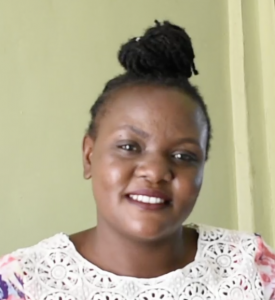The 350 people of Mumasaka Community struggle to access sufficient water. They currently have the choice of using a dangerous, protected dug well that is often dry or the busy, unprotected Shikure Spring that makes them ill. Either way, their time and health are stolen, all in the name of water.

Field Officer Adelaide Nasimiyu shared, "The spring water source can lead to slips and falls during the rainy season. The place is very slippery. It is too overcrowded, especially in the dry season, because most people depend on this water source for water. The dug well dries up during [the] dry season. The well has a lid [but] sometimes it's forgotten to be locked up. It becomes very dangerous to young children who play around the well. One can easily fall into it since it's [an] unprotected dug well."
Mumasaka's community members primarily rely on the distant spring. Still, it is extremely overcrowded, making it difficult to do anything other than make multiple tedious trips to collect water, but that is not its only issue.
"The spring has penetrations that allow surface water to contaminate the eye. This has led to the outbreak of waterborne diseases in this community. This spring needs to be protected because it will save a lot of lives, especially the children," continued Adelaide.
Children acutely feel the effects of the water crisis in their community. Without access to clean, safe water, they sacrifice their health and education, which has drastic, detrimental effects on their futures in the long run.
Fourteen-year-old Wayne bravely shared his story.

Wayne, at the spring, that needs protection.
"I was sick after drinking dirty water and this led to a lot of frustrations; I was unable to do anything since I was weak and emaciated. My body lacked energy, to the extent that I couldn't function normally. I remember I was taken to the hospital that day, [and] I couldn't come back home with my parents because I had to stay at the hospital for some days before the doctor could allow me to go back home," Wayne said.

Wayne (right, striped shirt) in the spring, waiting to collect water.
The time spent being unwell and hospitalized, as well as the time spent collecting water, has taken a toll on Wayne's education.
"There are times I am late to school and miss classes because of fetching water in the morning before going to school. Most of the time, [I'm] punished for coming to school late by the teacher on duty. They don't want to understand, and they always say that it's a lame excuse. This makes me sad and [I] lose my concentration in class. This has made my grades drop greatly," said Wayne.
Without access to clean water, life for Wayne is bordering on unbearable.
Protecting the community spring will give him access to clean water, enable him to focus on his education, and enjoy his childhood instead of being sick and unable to attend school consistently.

"My future plan is to work hard and excel in my studies. When I grow up, I want to be a politician so that I can be able to help people from my community access water at their doorstep. I want to see my parents happy, and to make them happy, is me excelling in my studies," Wayne dreams.
Steps Toward a Solution
Our technical experts worked with the local community to identify the most effective solution to their water crisis. They decided to safeguard the existing flowing spring.
Spring Protection
Springs are natural water sources that originate from deep underground. As water travels through various layers of the earth, it undergoes a natural filtration process, making it cleaner and safer to drink. To protect these spring sources from contamination, we construct a waterproof cement structure around layers of clay, stone, and soil. This design channels the spring water through a discharge pipe, facilitating easier, faster, and cleaner water collection.
Chlorine Dispenser
As an extra measure towards water quality safety, uniquely engineered chlorine dispensers are installed at all of our spring protection projects so community members can treat their water with pre-measured doses of chlorine. The chlorine treats any residual contamination and stays active for two to three days, ensuring water stays safe to use even when stored at home. Chlorine delivery and maintenance of the dispensers are part of our ongoing community support.
Community Education & Ownership
Hygiene and sanitation training are integral to our water projects. Training is tailored to each community's specific needs and includes key topics such as proper water handling, improved hygiene practices, disease transmission prevention, and care of the new water point. Safe water and improved hygiene habits foster a healthier future for everyone in the community. Encouraged and supported by the guidance of our team, a water user committee representative of the community's diverse members assumes responsibility for maintaining the water point, often gathering fees to ensure its upkeep.

 Protected Spring
Protected Spring
 Rehabilitation Project
Rehabilitation Project


















